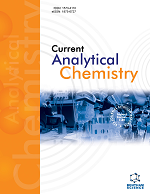
Full text loading...
We use cookies to track usage and preferences.I Understand

The utilization of Gas Chromatography-Mass Spectrometry (GC-MS) for the detection of Volatile Organic Compounds (VOCs) as potential biomarkers in cancer diagnostics is an evolving and promising field. This review outlines current exploratory and pilot studies that lay a fundamental groundwork for future research. Due to the complexity of the fecal and respiratory volatilome, influenced by a myriad of biological and environmental factors, it is crucial to expand research demographics to enhance data robustness and ensure the applicability of findings across diverse populations. We have also, herein, highlighted the dual capability of VOC analysis to detect cancer and differentiate between its stages, which is vital for customizing patient treatment plans and monitoring therapeutic efficacy. Furthermore, establishing quantifiable thresholds for VOC concentrations is essential for their clinical adoption as reliable indicators of cancer. The integration of GC-MS with machine learning and Artificial Intelligence (AI) could be useful for comprehensive metabolic profiles and facilitating the development of non-invasive and real-time diagnostic tools. The adoption of multi-omics approach promises a deeper understanding of cancer biology, potentially leading to personalized medicine and strategies finely tuned to individual molecular profiles. Hence, the research on VOCs as cancer biomarkers is set to offer transformative advancements in diagnostic technologies, ultimately improving patient outcomes through tailored therapeutic interventions.

Article metrics loading...

Full text loading...
References


Data & Media loading...